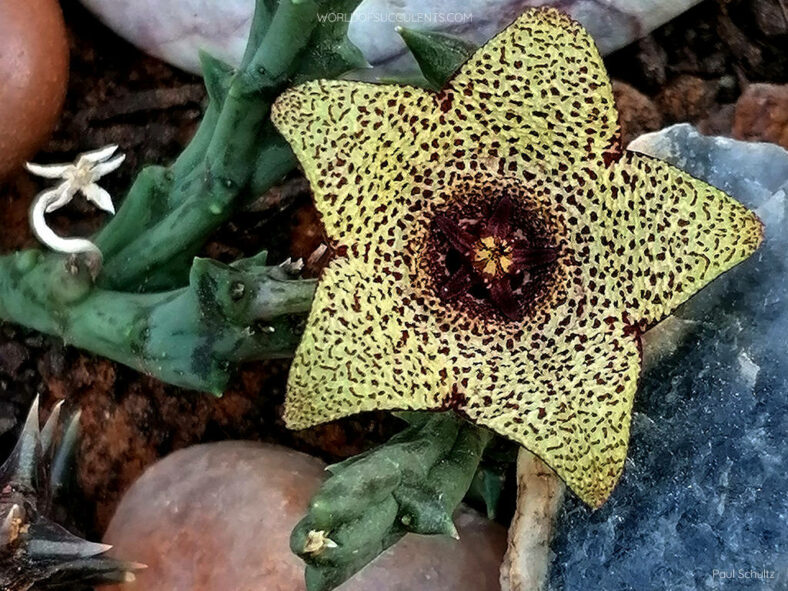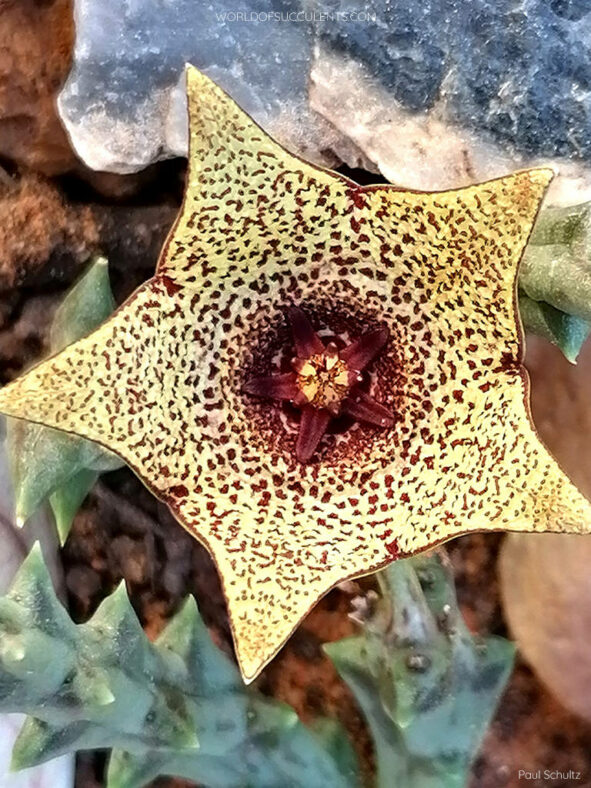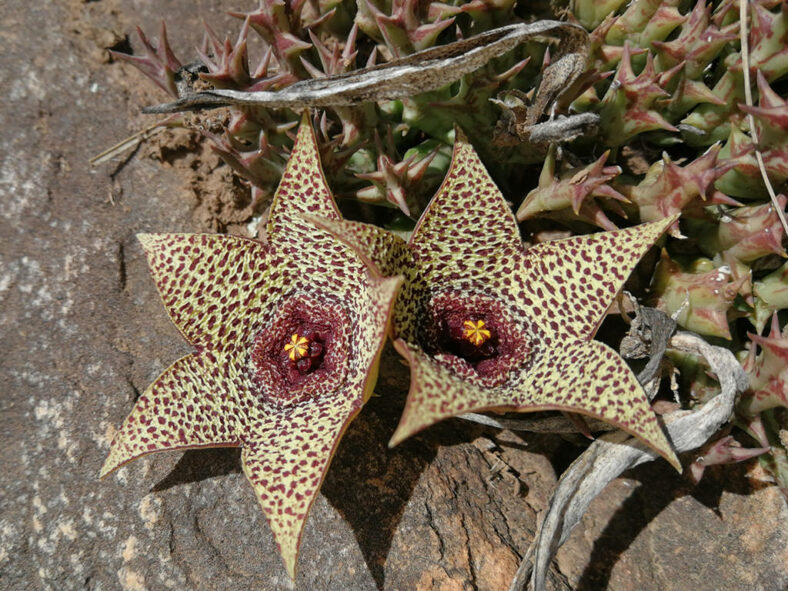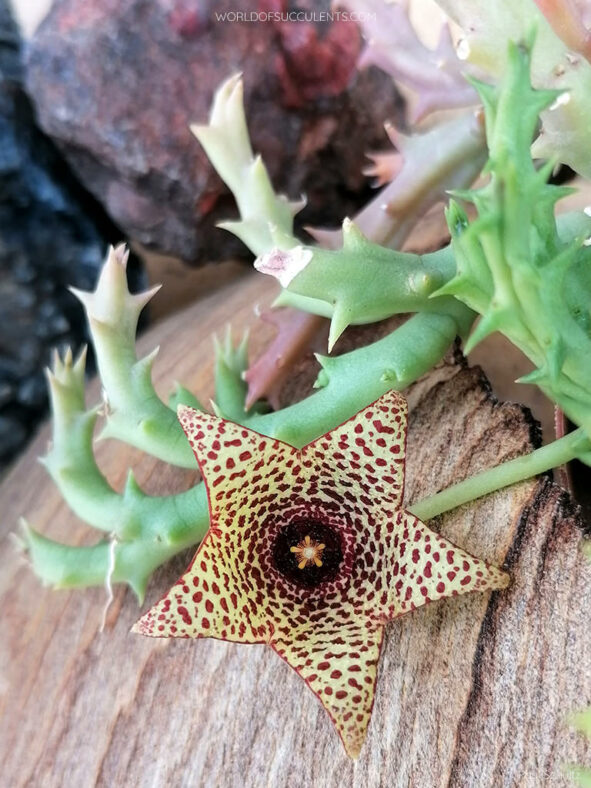Orbea verrucosa is in many ways similar to Orbea variegata and also very similar to Orbea pulchella.
Scientific Name
Orbea verrucosa (Masson) L.C.Leach
Synonym(s)
Ceropegia irrorata, Orbea verrucosa var. verrucosa, Podanthes verrucosa, Stapelia verrucosa, Stisseria verrucosa
Scientific Classification
Family: Apocynaceae
Subfamily: Asclepiadoideae
Tribe: Ceropegieae
Subtribe: Stapeliinae
Genus: Orbea
Etymology
The specific epithet "verrucosa" (pronounced ver-oo-KO-suh) means "warty; rough, rugged" and refers to the rough inside of the flowers.
Origin
Orbea verrucosa is native to southern South Africa. It grows on shale banks or among rocks and small bushes on dry slopes or flats from the Great Kei River in the Eastern Cape to Oudtshoorn in the Western Cape province.
Description
Orbea verrucosa is a small succulent that forms clumps of decumbent stems with tubercles loosely arranged into four rows along the stem with a groove between the rows. The stems are green, mottled with purple-brown, and can grow up to 4 inches (10 cm) long and 0.4 inches (1 cm) thick, excluding teeth. The tubercles taper into a conical sharp tooth, reaching up to 0.35 inches (0.9 cm) in length.
In the fall, Orbea verrucosa produces 1 to 3 flowers per stem on stalks that can grow up to 1.2 inches (3 cm) long. The corolla is usually shallowly bowl-shaped and can reach a diameter of 2.4 inches (6 cm). It is smooth, pale green towards the base, flecked and veined with purple-brown on the lobes on the outside, while pale yellow with purple-brown to red spots and covered with transverse papillate rugosities on the inside. The spots become smaller and denser on the annulus. The corona consists of dark purple-red outer lobes and bright yellow inner lobes with purple-red margins.

How to Grow and Care for Orbea verrucosa
Light: Orbea verrucosa thrives in full sun or partial shade during the hottest summer days. Too much sun causes the stems to develop a protective pigmentation or get sunburned. Not enough light leads to weak, thin stems and fewer flowers. Indoors, place the plant near a sunny window in your home.
Soil: The right soil is crucial to growing a healthy plant. Use commercial soil for succulents, or prepare your own mix with 50% to 70% mineral grit, such as coarse sand, pumice, or perlite.
Temperature: This plant thrives in warm outdoor environments but does not like winter cold and should remain moderately dry and warm during its winter dormancy. Orbea verrucosa grows best in USDA Plant Hardiness Zones 11a to 11b, with average minimum winter temperatures ranging from 40 to 50 °F (4.4 to 10 °C).
Watering: It has typical watering needs for a succulent. During the growing season, water your plant thoroughly and allow the soil to dry before watering again. The plant goes dormant in winter and needs almost no water, about once a month.
Fertilizing: To keep it thriving, fertilizing during the growing season is a good idea. Feed with water-soluble fertilizer diluted to half the recommended strength.
Repotting: Orbea verrucosa will benefit from fresh potting soil every 2 or 3 years. Repot it in spring, just before the growing season starts. Pick a container with drainage holes.
Propagation: The best way to propagate this succulent is by stem cuttings. It is also easy to grow from seeds. Take cuttings during the growing season to ensure good rooting. Sow the seeds in spring.
Learn more at How to Grow and Care for Stapelia.
Toxicity of Orbea verrucosa
Orbea verrucosa has no toxic effects reported. It is safe around pets and humans.
Links
- Back to genus Orbea
- Succupedia: Browse succulents by Scientific Name, Common Name, Genus, Family, USDA Hardiness Zone, Origin, or cacti by Genus
Photo Gallery
Click on a photo to see a larger version.


